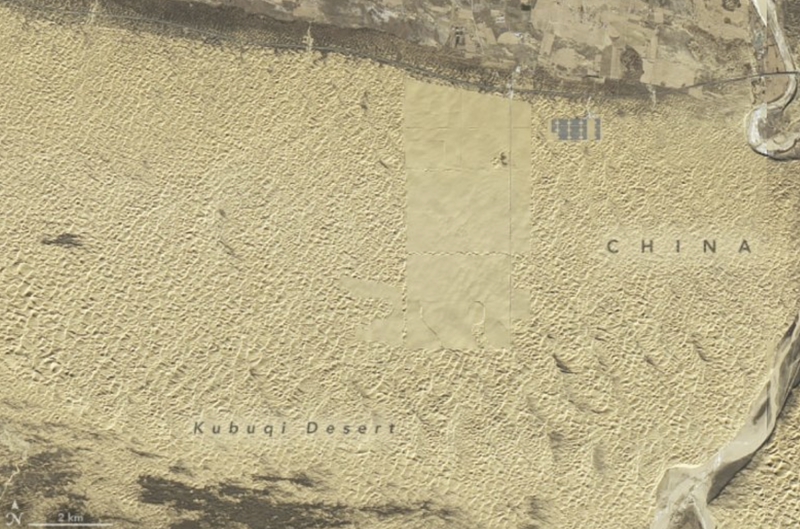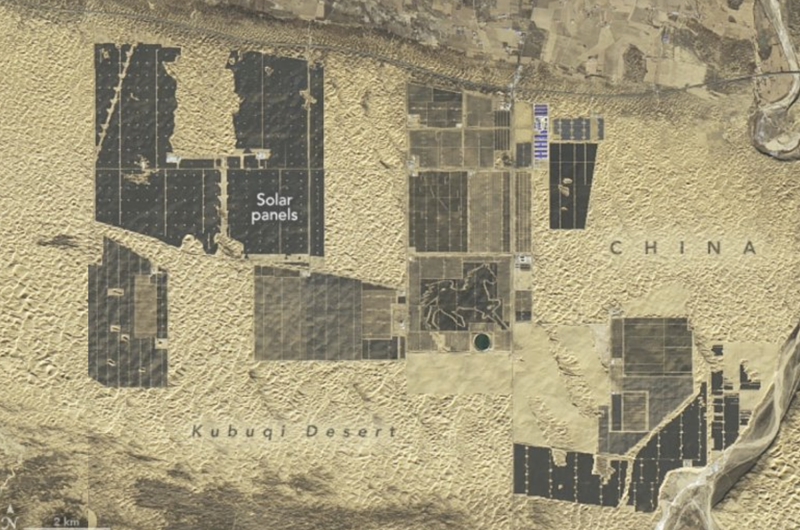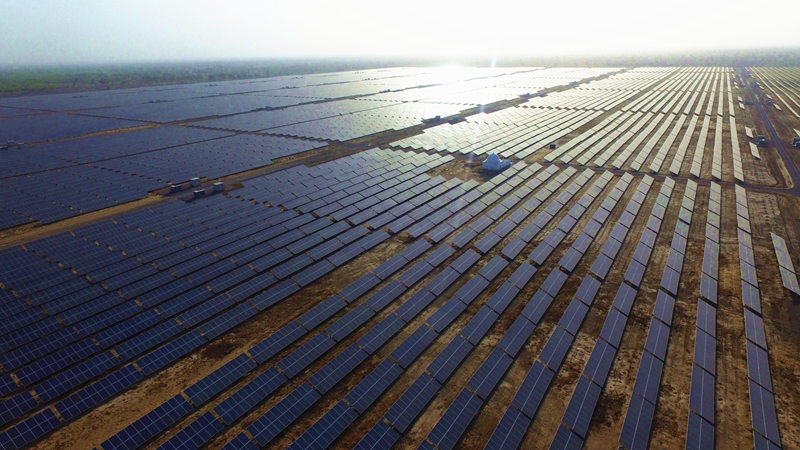By Wu Siya
BEIJING, Jan. 14 (China Economic Net) – On December 30, 2024, the National Aeronautics and Space Administration (NASA) released satellite images of a photovoltaic power station here. NASA mentioned that the Kubuqi Desert was once had a reputation for being a “sea of death” because it was sandy and mostly devoid of life, but the rapid increase in PV panels in recent years has transformed it into “a sea of possibility” for photovoltaic power generation. “The construction is part of China’s multiyear plan to build a “solar great wall,” NASA included.


Satellite image changes of Kubuqi Desert from December 2017 to December 2024 [NASA website]
Shining blue photovoltaic panels are spread across the vast desert, which is the Fine Horse Power Station built in the Kubuqi Desert in North China’s Inner Mongolia Autonomous Region. Nearly 200,000 photovoltaic panels form the shape of a horse, symbolizing China’s inexhaustible efforts to become a clean energy power.
The project, expected to be finished in 2030, will be 400 kilometers long, 5 kilometers wide, and achieve a maximum generating capacity of 100 gigawatts. So far, about?5.4 gigawatts have been installed.
In July 2024, by commissioning new wind and photovoltaic power generation equipment, China's installed capacity of solar and wind power generation reached 1.206 billion kilowatts, achieving the goal originally expected to be achieved in 2030. Alexey Grivach, deputy chairman of the Russian National Energy Security Foundation, pointed out: “China is becoming a world leader in the production of solar and wind power generation equipment.”
As of June 2024, China led the world in operating solar farm capacity with 386,875 megawatts, representing about 51 percent of the global total, according to Global Energy Monitor’s Global Solar Power Tracker. The United States ranks second with 79,364 megawatts (11 percent), followed by India with 53,114 megawatts (7 percent).
More than that, China’s photovoltaic industry is actively developing international markets, in which these blue panels are bringing more possibilities for energy transformation to partner countries. As Pakistani consumers show great interest in installing solar systems in residential and commercial properties, Chinese solar panels and components are pouring into Pakistan, which has become the world’s sixth largest solar market. Statistics show that since 2021, China has exported photovoltaic products worth about USD 4.1 billion to Pakistan, highlighting the Pakistani people’s preference for solar energy.

Pakistan’s 900MW large-scale ground PV power station built by Chinese solar provider Zonergy [Photo provided to CEN]
Pakistan’s think tank Renewables First released a report saying that the energy structure shift to distributed photovoltaics is enough to have a far-reaching impact on the country. For a country with a peak grid demand of 30,000 megawatts and a utility-scale concentrated solar installed capacity of only 630 megawatts, the surge in distributed photovoltaics will greatly change Pakistan’s energy system. According to a national plan, by 2030, 60% of Pakistan’s energy will come from renewable energy, which undoubtedly means that the South Asian country has emerged as a new major overseas market for Chinese photovoltaic companies.
The International Renewable Energy Agency, headquartered in Abu Dhabi, UAE, released the Renewable Energy Generation Capacity Statistics 2024 report, pointing out that in the past 10 years, the average cost per kilowatt-hour of global wind power and photovoltaic power generation projects has decreased by more than 60% and 80% respectively, a large part of which is attributed to Chinese innovation and Chinese engineering.
The International Energy Agency (IEA) pointed out that as of now, China’s wind power and PV products have been exported to more than 200 countries and regions around the globe, helping developing countries to obtain clean and reliable energy. “China’s provision of relevant services and support to other countries has significantly improved the accessibility of clean energy technologies and reduced the cost of using green technologies globally,” Fatih Birol, Executive Director of the IEA, pointed out.
(Editor: fubo )


